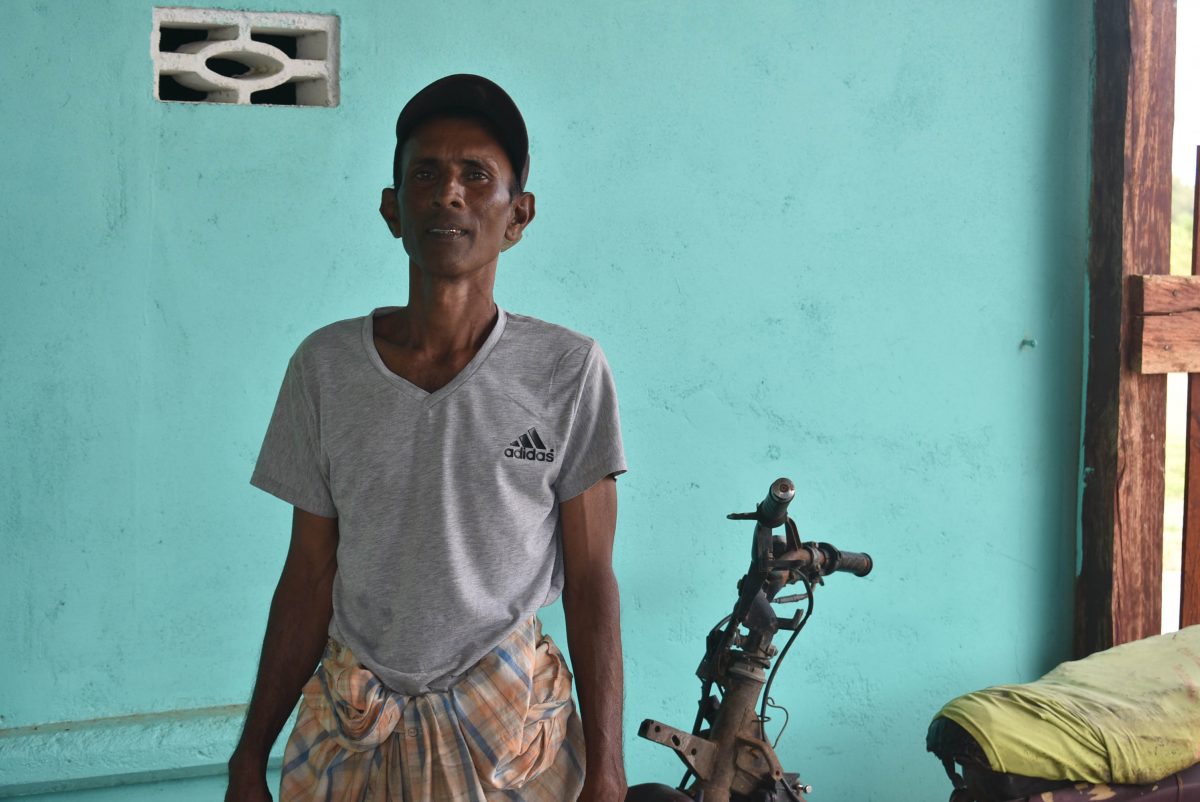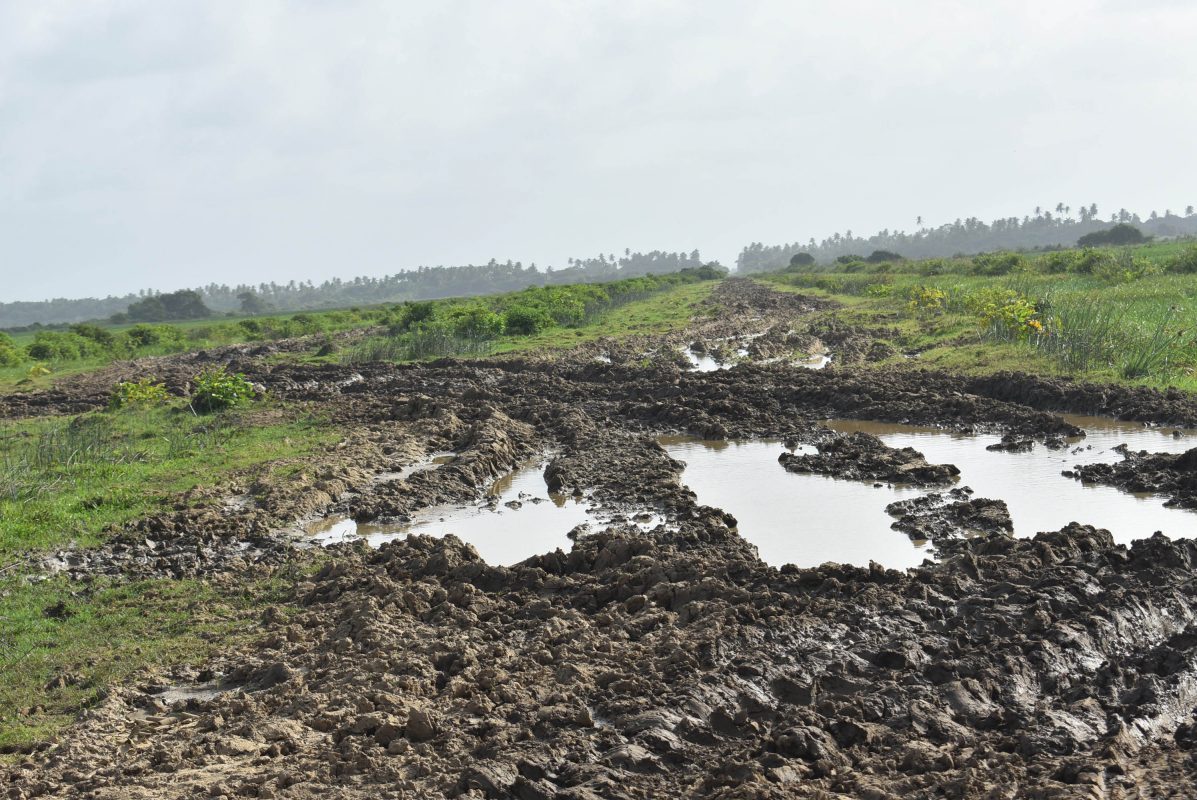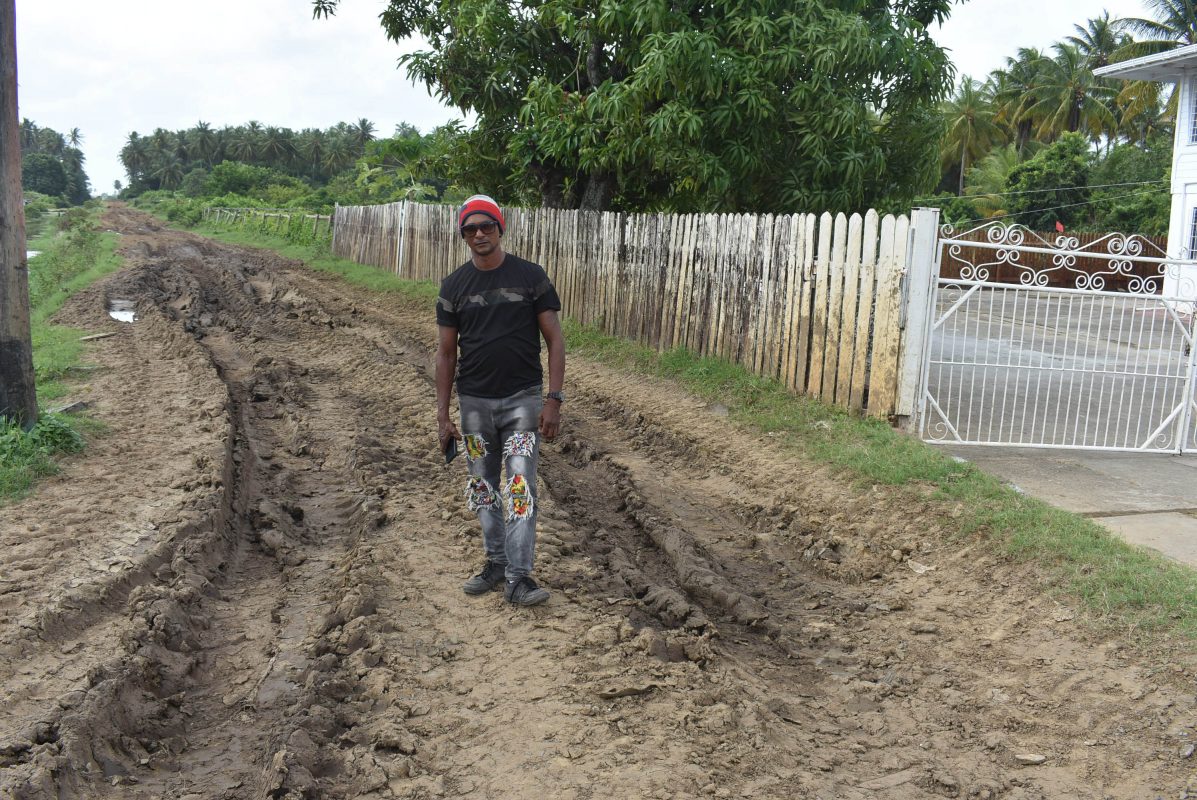It is easy to understand why seasonal weather patterns often coincide with changing demeanour among farmers in some regions of Guyana. Region Six is one such Region. Too little or too much rain can radically alter the seasonal fortunes of farming communities and in far too many of those communities there is little that the farmers can do but brood and hope that the impact of inclement weather on their livelihoods, this time around, will not be as severe as on the preceding occasion. Inhospitable weather conditions can impact every aspect of farming, from land preparation to harvesting and when the worst extremes materialize, the impact on the lives and the livelihoods of the farming families can be devastating. Two weeks ago, in pockets of farming communities in parts of the Corentyne Coast, the weather and its impact on farming was plain for all to see. At Bengal, (the name reportedly given to the community by the Indian Immigrants who were given land after the end of their period of indenture) the farmers were brooding. They sat outdoors, grimly contemplating the consequences of a weather pattern which, they said, had persisted for three ‘back-to-back’ years.
There was, it seemed, no end to the unceasing rainfall that had wrecked much of the infrastructure and caused the crops to fall victims to watery graves. Bengal is about rice and cash crops. Those finance the livelihoods of families and the investments in the next round of crops to be planted. Narine, known to the community as ‘Chico’ was one of the few farmers available when the Stabroek Business visited who appeared inclined to talk. It was, he said, hard to watch the rains, the ‘white flies’ and the wild animals taking turns at devastating the livelihoods of the farmers. He was particularly ‘mourning’ the loss of his boulanger and his bora. He appeared to be brooding without being altogether discouraged. Like the other farmers, he appeared resigned to the reality that what the farmers were experiencing amounted to an occupational hazard of the pursuit. During the course of our conversation his mood appeared to change from one of doom and gloom to a kind of this too shall pass demeanour. Still, he could help but hark back, intermittently, to his four thousand “bearing tomato plants” which the rains had claimed.
As if to suggest that all had not been lost, he drew our attention to a tray of green tomatoes which, he said, were what had been salvaged from the feast of white flies that had claimed the remainder. He doubted that even those that had been salvaged would ‘make it’ to market. Zaleema, ‘Chico’s’ wife, who, all along had been listening in dolefully, chose that juncture to ‘throw in’ the fact that the farming was their livelihood since “there is nothing else around here to do. We like farming,” she added disjointedly, as if to make the point that the season’s disappointment notwithstanding, they were still nowhere near to walking away. (White flies, for the uninitiated, are tiny flying insects that infest vegetables plants, draining them of their juices and leaving behind a sooty mold that grows on the foliage). Cabbage, Citrus, Boulanger, Potatoes and Tomatoes have been found to be particularly vulnerable to the white fly.
Shamlal Budhai and Ivor Rahim had waited patiently for their respective turns to ‘chip in.’ Their farming pursuits are, in every sense, identical to those of the other farmers. Shamlall operates a three-acre ‘spread.’ His challenges are identical to those of his colleagues and when we spoke with him he appeared to be more ‘edgy’ than his colleagues. The white flies had become a preoccupation with Shamlall. His already considerable investment in chemicals (including one which we referred to as Splenda) had brought him no relief. The white flies, he said, continued to multiply at a mind-boggling rate, taking a particular liking to his boulanger and celery plants. At Bengal, a few villages away, Brian Albert, another cash crop farmer, greeted us with what, in the circumstances, was ‘good news.’ He told us that he had been able to reduce the infestation of ‘white flies’’ on his own farm. His ‘secret,’ he told us, was crop rotation. Brian told the Stabroek Business that he has employed a three-month rotation cycle, alternating between vegetables and what he described as ‘vine crops’ or legumes. He has also cultivated the habit of allowing the land to ‘rest’ for around three weeks before resuming planting. He explained that this was a traditional farming method employed by farmers to help control the nutrient and water balance in the soil as well as to help stave off infestation by plant pests. Oddly enough, while Narine, Shamlall and Ivor had all told us earlier that their approach had been similar, they, it appeared, had not benefitted from the same results as Brian had. We left the farmers with plant diseases on our minds, with the available evidence suggesting that once the diseases persisted, it would be for them to lift themselves above subsistence level.
Specialist
Wanting to learn more we headed for the University of Guyana Campus at Tain to engage Professor Gomathinayagam Subramanian, a specialist Microbiologist and Botanist who specializes in Plant Pathology. The Professor is employed at the Tain Campus. We spoke with the Professor by phone on the subject of white flies. He did not recommend chemicals as a particularly helpful response to the infestation. Instead, he put forward a concoction of ‘garlic mix and fresh cow manure’, which he said should be applied to the affected plant twice daily, before 9:00 hrs. and after 15:00 hrs. If it sounded, suspiciously, like an old-fashioned ‘home remedy’, the highly qualified scientist assured us that stringent application of the concoction would reduce and might even eliminate the white fly menace altogether. He did, as well, add his own nod of approval to the crop rotation recommendation that had been made earlier by Brian at Bengal.
The Stabroek Business’ exchanges with the farmers were not exclusively focused on the vicissitudes of the weather. There was only so much that could be said about the weather and its impact on the livelihoods of the farmers. The ‘victims’ had become ‘prisoners’ of their circumstances. Ironically, Chico, Shamlall and Ivor all told us the farming was not, for any of them a ‘first choice’ pursuit. Their pursuits had been entirely influenced by the physical environment in which they had been brought up. Afterwards, adulthood and family responsibility had ‘forced’ their respective hands. Ivor, who had commenced farming about five years earlier, had he said, drifted from one business venture to another. He had become a farmer by force of circumstances and over the past three years he had watched his cost of production triple. These days, an investment of around $400,000 per crop was usually followed sharply by a protracted period of worry as to whether his investment would pay off. Weather and white flies were one of his dominant preoccupations. There were other concerns too…like whether, even if the particular crop had ‘come through,’ the ‘middle man’ would agree to a price that would make it worth his while. These days, he said, visiting the farm had not been pleasant experiences. On each visit he was being confronted with around 3,500 boulanger plants fighting a losing battle against the sogginess and the white flies.
The business of making ‘deals’ with middlemen is a precarious one. You encounter a ‘buyer,’ strike a deal based on a crop that may be ready for market in a week and just before delivery and payment, the ‘buyer’ returns with a ‘story’ about the state of the market, at the end of which he reneges on the originally agreed price. Here again, he explains, one is dwelling in an environment in which there are few choices. He points out that while the nature of the market affords the ‘middleman’ that sort of leverage, the farmers themselves dare not treat their own labourers/ farm hands that way. “You risk that and you may never see them again. In the farming culture, labourers frequently hold the ‘whip hand.’ The terms and conditions that particular farming community afford them are $4,000 per nine-hour day and remuneration at the end of each day. Ivor estimates that labourers earn around $80,000 per crop.
Worrying
Farming, Chico explains, is not just about sowing, reaping…and worrying. There are many instances, he says in which farmers must double up as ‘watchmen’ and vendors. In the latter instance, it is a matter of ‘getting around’ the ‘middle man.’ In the former instance it is mostly about discouraging the wild animals whose vegetarian and fruitarian instincts tend to coincide with the readiness of fruits and vegetables for market. Their duties include providing support in areas that include planting, harvesting, removing reaped produce from the farms, applying manure to the soil, and removing weeds that might negatively impact the growth of crops. The farmers who we met during our visits to the separate communities were unequivocal in their view that there are factors that make the pursuit ‘tough going.’ They conceded that our visit had coincided with a condition of concern, even considerable worry over their immediate-term well-being.
Vast expanses of land may create a mirage of prosperity, but as the men and women of these communities explain, it is often a matter of living from one harvest to the next. The weather, pests or the vagaries of the market can make a difference from which it could take time to recover. The rains and their impact have engendered a sense of fretfulness among some farmers. They make the point that all too frequently, it is the expeditiousness with which the flood relief is delivered that is critical. The principle, they say, is simple. The longer the water remains on the land, the more protracted the crisis will be. Flood relief, they say, ought to be an emergency mechanism and it ought to be delivered with maximum alacrity.
One Corentyne farmer told this newspaper about his name not being “on the list” for a flood relief grant. This, he said, occurred even as they claimed to know “for a fact” that persons who are neither cattle, rice nor cash crop farmers had benefitted from Flood Relief payouts. The intervention of the weather can create tensions in these farming communities. Access dams can become the focus of controversy. Some farmers claim that the problem begins with inadequate maintenance regimes. The dams are shared facilities and when they are drenched by heavy rainfall and afterwards must endure the constant movement of tractors from the rice lands, they quickly fall into a condition of the most alarming disrepair. In these circumstances, the cash crop farmers say, it is they who suffer.
Various recommendations have been put on the table to address the problem. The cash crop farmers insist that the dams can remain in reasonable condition if the rice farmers’ tractors simply remain in the backdam during the rainy periods. The rice farmers, it appears, respond that security considerations are bound to arise out of compromising the security of such high-priced equipment. That aside, and across the board, there appears to be a consensus that the problem will not go away unless government rolls out a far more reliable regime for the maintenance of the dams. This newspaper’s visit did, indeed, find the dams in what in some instances, was deplorable and the evidence of differences of opinion over how the situation should be handled is almost certain to impact on community relations.
Float
When, as happens, the dams become well-nigh impassable by vehicle, cash crop farmers would secure their produce in plastic bags and float the bags along the canal in order to have them reach the ‘market’. The other option is to fetch the produce out of the farms on their heads –or else hire labourers to do so – to their homes, which, in some instances, may be two or three miles away. Good community relations, in some instances, allow for rice farmers to press their vehicles into service to ‘help out’ the cash crop farmers with the movement of their produce from farm to home or to market. When we encountered Brian Albert at Philippi, he was brooding. He had only just returned from the Police Station where he had gone to report his boat engine stolen. Up to the time of the Stabroek Business departing from the community the situation had remained unchanged.
Albert told the Stabroek Business that a group of farmers in the Philippi community had taken a decision to invest in a boat and engine to move their produce from farm to market. The vessel that appears to have been agreed on is a 20-ft boat, 15 horse power engine that could cost around $400,000. In this particular instance, he had to secure a loan to replace his stolen engine. Brian’s farm is located about two miles from the Public Road. We could only chat with him briefly. We went on our way to Port Mourant. Port Mourant is largely about the community’s municipal market. When we got there it was ‘humming.’ Prices of farm produce compete favourably with those in the capital. It rivals other markets across coastal Guyana for its ‘prices’ and its vibrancy. If the farmers who trade at Port Mourant value the market there highly, there can be no question than that they are constantly looking for ‘the next dollar.’









